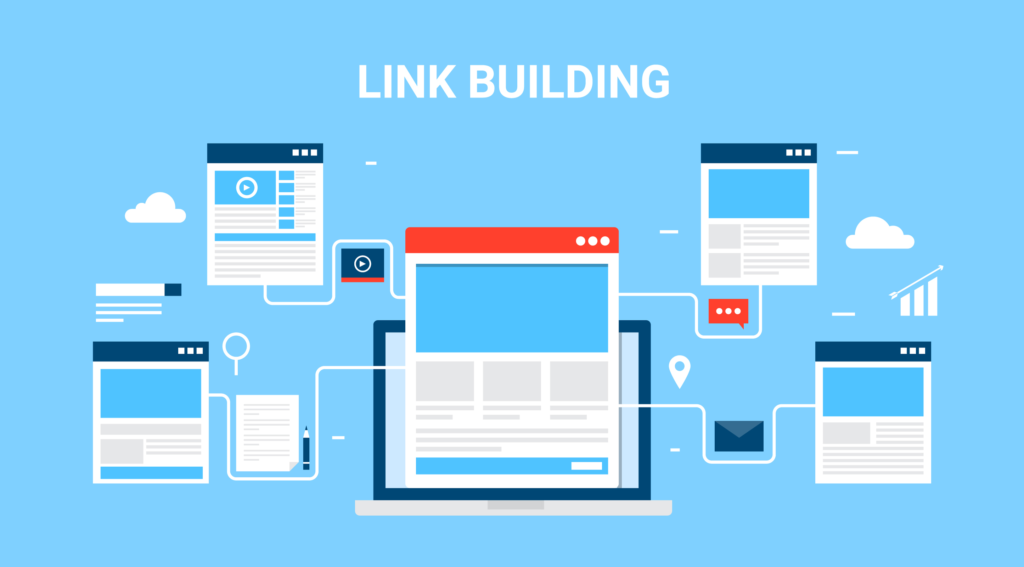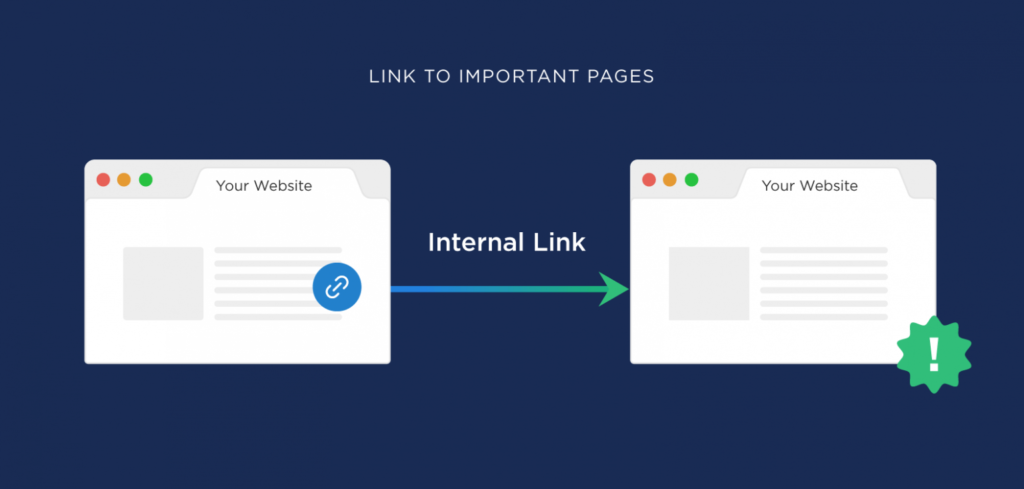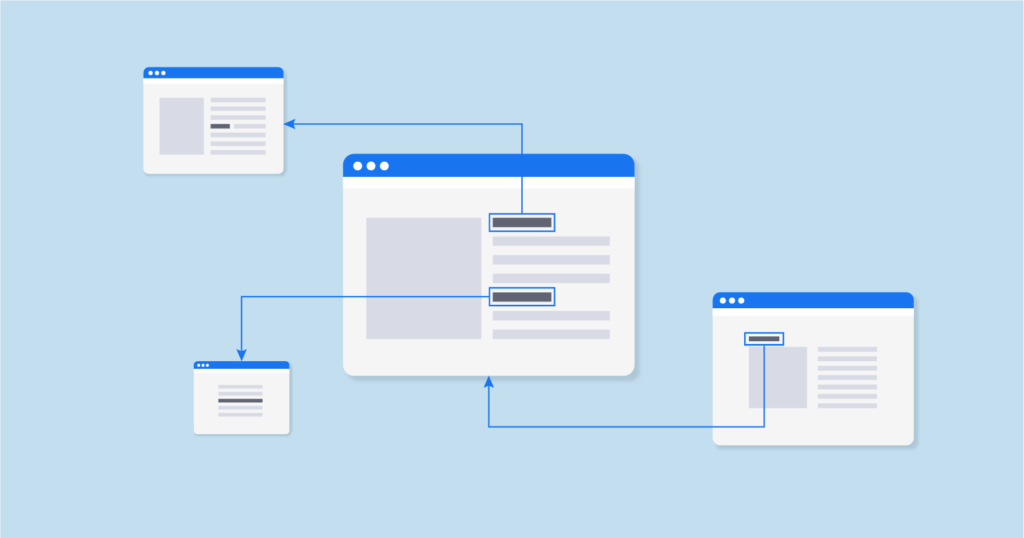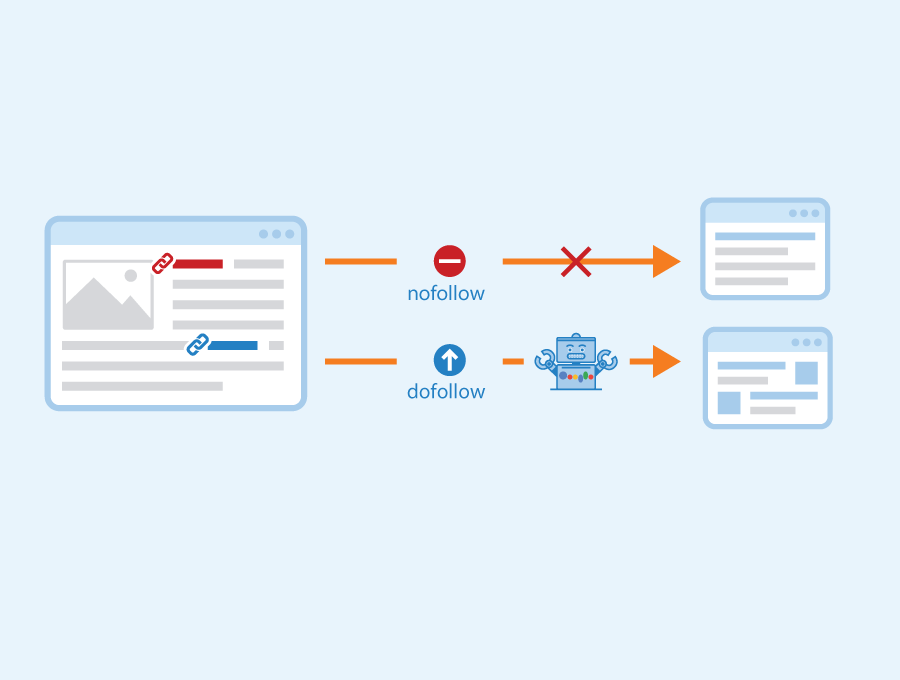Link Building for SEO
Common link building strategies include creating valuable and shareable content, guest posting, outreach to influencers and other websites in your industry, and participating in community discussions. It's an ongoing process that requires time, effort, and a thoughtful approach to build a strong and effective backlink profile.
What is Link Building for SEO
Link building is a crucial aspect of search engine optimization (SEO) that involves acquiring hyperlinks from other websites to your own. These hyperlinks, or backlinks, play a significant role in determining the authority, credibility, and visibility of a website in search engine results.
Here’s why link building is important for SEO:
Search Engine Rankings: Search engines, like Google, consider backlinks as a vote of confidence for a website’s content. Websites with high-quality and relevant backlinks are often perceived as more authoritative and trustworthy, leading to higher search engine rankings.
Credibility and Authority: Backlinks from reputable and authoritative websites can enhance your own site’s credibility and authority in your industry or niche. When well-respected sites link to your content, it can boost your reputation and influence in the online community.
Traffic Generation: Backlinks not only impact search engine rankings but also contribute to direct referral traffic. When users click on a link on another website and land on yours, it can result in increased visibility and potentially new customers.
Indexing and Crawling: Search engines use crawlers to discover and index web pages. Backlinks act as pathways that guide these crawlers to discover new pages. The more high-quality backlinks your site has, the more likely it is to be crawled and indexed by search engines.
Anchor Text Optimization: The anchor text (the clickable text in a hyperlink) provides context to search engines about the content of the linked page. Strategic use of anchor text in backlinks can positively influence your site’s relevance and ranking for specific keywords.
An internal link is a hyperlink that points to another page within the same website or domain. These links play a crucial role in website navigation, user experience, and search engine optimization (SEO). Internal linking helps establish the structure and hierarchy of a website, allowing both users and search engines to understand the relationships between different pages and the overall content.
Here are some key aspects of internal links:
-
Navigation: Internal links provide a way for users to navigate through the various pages of a website easily. They are typically found in navigation menus, footer links, and within the content of individual pages.
-
User Experience: Well-placed internal links enhance the user experience by guiding visitors to related or relevant content. This can help users find additional information, explore related topics, and spend more time on the website.
-
Information Hierarchy: Internal links help establish the hierarchy and importance of content within a website. Pages that are linked to more frequently or prominently are often seen as more important by search engines.
-
SEO Benefits: Search engines use internal links to crawl and index a website. When search engine spiders discover a new page through internal links, it helps in indexing that page and understanding its context within the site. Internal links also contribute to distributing PageRank (a measure of a page’s importance) throughout the site.
-
Keyword Relevance: Using anchor text (the clickable text in a hyperlink) that includes relevant keywords in internal links can signal to search engines what the linked page is about. However, it’s essential to use natural and descriptive anchor text for a positive user experience.
-
Reducing Bounce Rate: Internal links can encourage visitors to explore multiple pages on a website, reducing bounce rates. Bounce rate is the percentage of visitors who navigate away from a site after viewing only one page.
When implementing internal linking strategies, consider the following best practices:
- Use descriptive and relevant anchor text.
- Ensure that internal links are contextually relevant to the content.
- Avoid excessive linking, as it can be distracting and potentially harm the user experience.
- Regularly audit and update internal links as the website’s content evolves.
What is Backlink / Inbound Link
A backlink, also known as an “inbound link” or “incoming link,” is a hyperlink that directs from one website to another. In other words, it is a link on a third-party website that points to a specific page on your website. Backlinks play a crucial role in search engine optimization (SEO) and are considered one of the factors that search engines use to assess the authority, credibility, and relevance of a website.
Here are some key points about backlinks:
-
Quality and Relevance: The quality and relevance of backlinks are crucial. A backlink from a reputable and relevant source is generally more valuable than one from a less reputable or unrelated site. Search engines use these factors to determine the overall authority and trustworthiness of a website.
-
Search Engine Rankings: Backlinks are a significant factor in search engine algorithms. Websites with a higher number of quality backlinks are often seen as more authoritative and may rank higher in search engine results pages (SERPs) for relevant queries.
-
Link Juice: Backlinks contribute to the concept of “link juice,” which represents the flow of authority or equity from one page to another. When a reputable site links to your content, it can pass on some of its authority to your site.
-
Natural Link Building: Search engines prefer natural, organic link building over manipulative tactics. Natural backlinks are earned through the creation of high-quality content that others find valuable and choose to link to.
-
Anchor Text: The anchor text of a backlink (the clickable text in the hyperlink) is important. Descriptive and relevant anchor text can provide additional context to search engines about the content of the linked page.
-
Diversity of Backlinks: A diverse backlink profile with links from various reputable sources is generally more beneficial than having many links from a single source. This diversity can contribute to a more natural and balanced link profile.
It’s important to note that not all backlinks are equal, and low-quality or spammy backlinks can have a negative impact on a website’s SEO. In fact, search engines may penalize sites for engaging in manipulative or unethical link-building practices.
Effective link building strategies often involve creating high-quality content, building relationships with other websites in your industry, and earning backlinks through organic means. Regularly monitoring your backlink profile and ensuring that it remains diverse and reputable is essential for a successful SEO strategy.
What is Extranal Link
An external link, also known as an outbound link, is a hyperlink that points from one website to a page on another domain. In other words, it’s a link on your website that directs users to a different website when clicked. External links are an essential part of the web ecosystem, as they connect different websites, providing users with additional resources and information.
Here are some key points about external links:
Source of Information: External links are often used to provide references, citations, or sources of information. When you include external links in your content, it adds credibility and allows readers to explore related topics in more depth.
Natural Linking: Linking to other reputable and relevant websites is considered a good practice, as it contributes to a more interconnected and informative web. Search engines recognize and value natural linking as it helps in understanding the context and relationships between different web pages.
User Experience: External links can enhance the user experience by offering readers the opportunity to access additional, relevant content. This can keep users engaged and satisfied with the information provided on your site.
SEO Impact: While external links don’t directly contribute to your website’s authority, they can indirectly influence your site’s SEO. Linking to high-quality, authoritative websites can be seen as a positive signal by search engines.
Nofollow Attribute: In some cases, webmasters may use the “nofollow” attribute on external links. This tells search engines not to pass authority or “link juice” to the linked site. This is often done to indicate that the link is for reference purposes and not necessarily an endorsement.
Difference Between Backlinks and External links
Backlinks:
- Definition: Backlinks, also known as inbound links or incoming links, are hyperlinks that point from one website to a specific page on another website.
- Direction: They come from external websites and direct traffic back to your website.
- Purpose: Backlinks are significant for search engine optimization (SEO) as they are considered a vote of confidence from other sites. Search engines use backlinks to assess the authority, credibility, and relevance of a webpage. High-quality backlinks can positively impact search engine rankings.
External Links:
- Definition: External links, also known as outbound links, are hyperlinks from your website that point to pages on other domains.
- Direction: They go from your website to external websites.
- Purpose: External links are often used to provide references, sources, or additional information to your website visitors. They can contribute to a more comprehensive and informative user experience. While they don’t directly impact your website’s SEO in the same way backlinks do, the quality and relevance of external links can indirectly influence your site’s credibility.
What is Do-follow and No-follow Link
Dofollow and nofollow are link attributes that provide instructions to search engines about how to handle a particular link. These attributes don’t affect how the link appears to users, but they have significance in terms of search engine optimization (SEO).
- Dofollow Link:
- Definition: A dofollow link is a standard hyperlink that passes authority and link equity from the source page to the linked page.
- HTML Attribute: Dofollow links do not have any special HTML attribute associated with them. In other words, if a link doesn’t have a nofollow attribute, it is assumed to be a dofollow link by default.
- SEO Impact: Dofollow links contribute to the recipient page’s authority and can positively influence its search engine rankings. These links are valuable for SEO purposes and are what most website owners aim to acquire.
Example of a dofollow link in HTML:
<a href="https://example.com" target="_blank">Visit Example</a>
- Nofollow Link:
- Definition: A nofollow link is a hyperlink with a specific HTML attribute that tells search engines not to pass authority or link equity from the source page to the linked page.
- HTML Attribute: The nofollow attribute is added to the link in the HTML code. It looks like this:
rel="nofollow". - SEO Impact: Nofollow links do not contribute to the recipient page’s authority for search engine rankings. They were introduced as a way for website owners to indicate that they don’t want to vouch for or endorse the linked content.
Example of a nofollow link in HTML:
<a href="https://example.com" target="_blank" rel="nofollow">Visit Example</a>
Website owners might use nofollow links in situations where they want to link to a page but not pass on authority, such as in user-generated content, paid links, or when linking to untrusted or unverified content.
It’s important to note that while dofollow links are valuable for SEO, a natural backlink profile often includes a mix of both dofollow and nofollow links. A healthy link profile looks more authentic to search engines, and having only dofollow links may appear unnatural.







